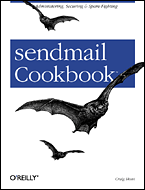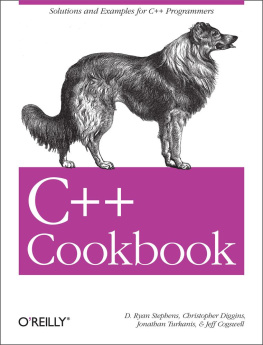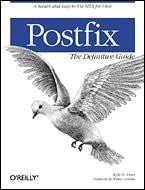Dedication
To Amanda, Pat, Kathy, Sara, and all mothers everywhere who continue to renew life and our love of life.
[]
access database
encryption levels
addresses
sender
aliases
aliases file
authentication
|
[]
blackhole lists (DNS)
blacklist_recipients
building
-bv option
|
[]
closing security holes
compiling
configuration
configuration files
master
Cyrus SASL
|
[]
defines
delivery
to files
to programs
directories
DNS
DNS blackhole list
domains
virtual
downloading
|
[]
encryption
outbound
error messages
errors
EXPOSED_USER macro
|
[]
files
delivery to
permissions
flags
.forward files
forwarding
ftp
|
[]
genericstable
sender addresses
grep
groups
queue groups
|
[]
headers
holes, security
hostnames
masquerading
sender addresses
hosts
external
|
[]
keys
keywords
knecht.mc file
|
[]
LDAP
local-host-names file
|
[]
mailers
mailertable
mailing lists
sender addresses
master configuration files
messages
queue
MX records
|
[]
newaliases command
NIS (Network Information Service), reading aliases
nullclient
|
[]
outbound encryption
outbound mail
|
[]
pathnames
permissions
PGP keys
PrivacyOptions
private CAs
procmail
filters
programs
delivery to
|
[]
regular expressions
RELAY_DOMAIN_FILE
relaying
relaying privileges, STARTTLS clients
return values
root
root access
routing
RPM Package Manager
RPM Package Manager)
rulesets
|
[]
SASL
holes
sender addresses
sendmail
upgrading
sendmail.cf file
sendmail.schema file
servers
service.switch file
signature files
smrsh
SMTP (Simple Mail Transfer Protocol)
commands
source code
spam
starting sendmail
STARTTLS
relaying privileges
|
[]
-bv option
-D flags
-l flags
/ flag
|
[]
upgrading sendmail
users
spam
trusted
|
[]
verification
virtual domains
virtusertable
|
 |
| Reviews |
| Reader Reviews |
| Errata |
| Academic |
Introduction
To follow a recipe successfully, you must clearly understand theinstructions it contains. You must understand the difference betweenfolding and stirring and be able to find the spices when the recipecalls for a pinch of cumin. Just as you must be able to find your wayaround the kitchen to become a cook, you must know your way aroundthe sendmail distribution in order to build or customize a sendmailconfiguration.
The directory
[1] Most of the ls command output in this book is generated on a Red Hat Linux system.Other versions of Unix and Linux may sort ls output in a different way. The listing order may be different, butthe files and directories will be the same.
$ ls sendmail-8.12.9Build doc INSTALL libsmdb mailstats praliases sendmailcf editmap KNOWNBUGS libsmutil Makefile README smrshcontrib FAQ libmilter LICENSE makemap RELEASE_NOTES testdevtools include libsm mail.local PGPKEYS rmail vacation
Most of these files and directories are used to compile is in thesendmail directory, the libraries are indirectories such as libsm andlibsmutil, and the source code of utilities suchas makemap and smrsh islocated in easily identified directories.
There are also several important sources of information in thedistribution:
The INSTALLand README filesprovide the latest information on compiling and installing sendmail.
The RELEASE_NOTES file lists the importantfeatures of the new release.
The KNOWNBUGS and FAQ files explainsolutions to chronic and common problems.
The doc subdirectory contains the Sendmail Installation and Operations Guide ,which is an excellent source of information for the sendmailadministrator.
Of all of these important directories and files, the most important(from the perspective of this book) is the cfdirectory, because the cf directory contains theconfiguration files (and this is a book about sendmailconfiguration).
The cf directory structure
The m4 source files and libraries used to build thesendmail configuration are located in the cfdirectory, which contains the following items:
$ ls sendmail-8.12.9/cfcf feature m4 ostype sendmail.schema siteconfigdomain hack mailer README sh
The cf directory contains two files,README and sendmail.schema,and nine subdirectories. The sendmail.schemafile isan experimental LDAP schema that predefines attribute types andobject classes that can be used with LDAP. The sendmail schema isused in most LDAP examples in this book. TheREADME fileis a comprehensive reference to the syntax and usage of all of the m4 macros and variables used to configuresendmail. The README file is an invaluablereference, particularly when used with this book.
The directories hack, sh,and siteconfig have very little use for mostconfigurations.
hack directory
The hack directory is intended to holdm4 source files built by the local systemadministrator to solve temporary sendmail configuration problems.There is only one file in the hack directory,built years ago, which serves as an example of a sendmail hack. Thehack directory and the HACK macro are still there, but, with all of the power and flexibilityavailable to configure sendmail, there is simply no good reason touse them.
siteconfig directory
The siteconfig directory is intended to hold filesthat use sendmail m4 SITE macros to list the locally connected UUCP sites. Thesiteconfig directory, the SITECONFIG macro, and the SITE macro are maintained for backward compatibility. However, thedirectory and the macros are obsolete and should no longer be used todefine the UUCP connectivity for a UUCP mail server.
| sendmail Cookbook | | By Craig Hunt | | Publisher | : O'Reilly | | Pub Date | : December 2003 | | ISBN | : 0-596-00471-0 | | Pages | : 408 |
The sendmail Cookbook providesstep-by-step solutions for the administrator who needs tosolve configuration problems fast. Each recipe in the sendmail Cookbook outlines aconfiguration problem, presents the configuration code thatsolves that problem, and then explains the code in detail.The book also provides lots of new material that doesn't getmuch coverage elsewhere--STARTTLS and AUTH are given entirechapters, and LDAP is covered in recipes throughout thebook. |








